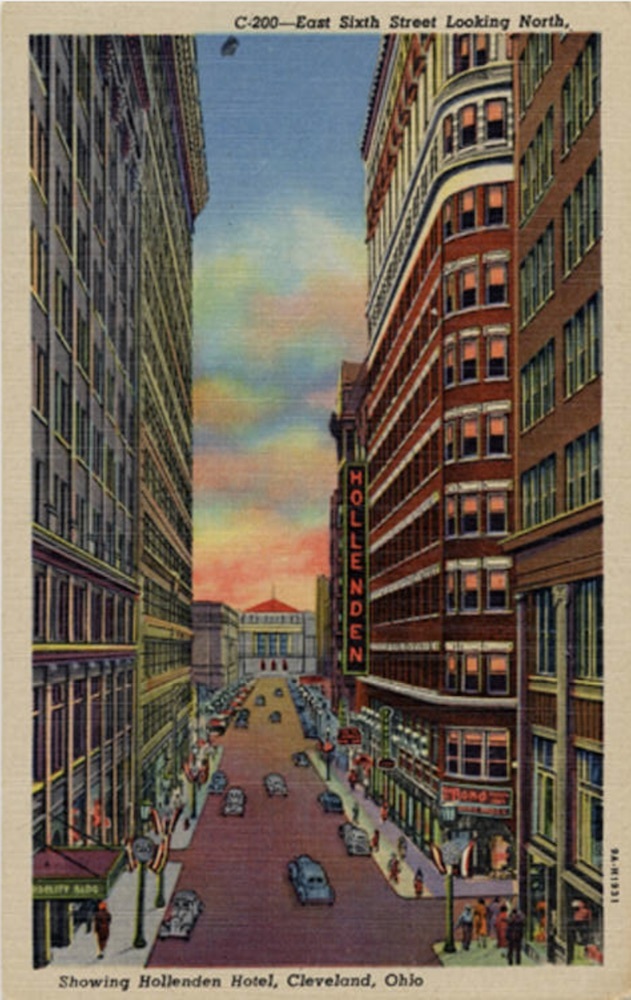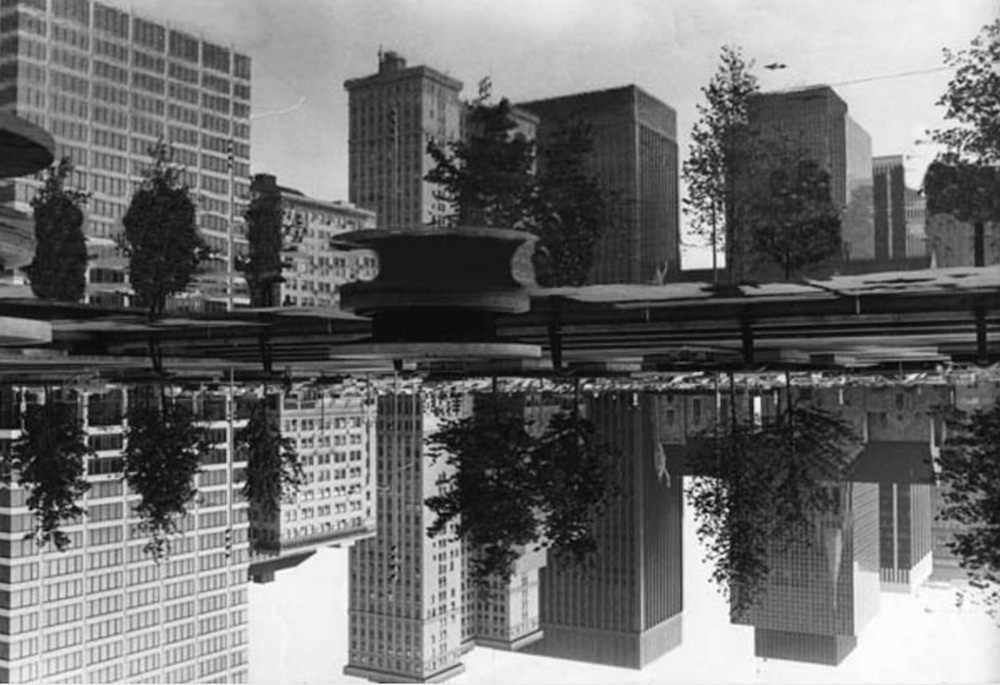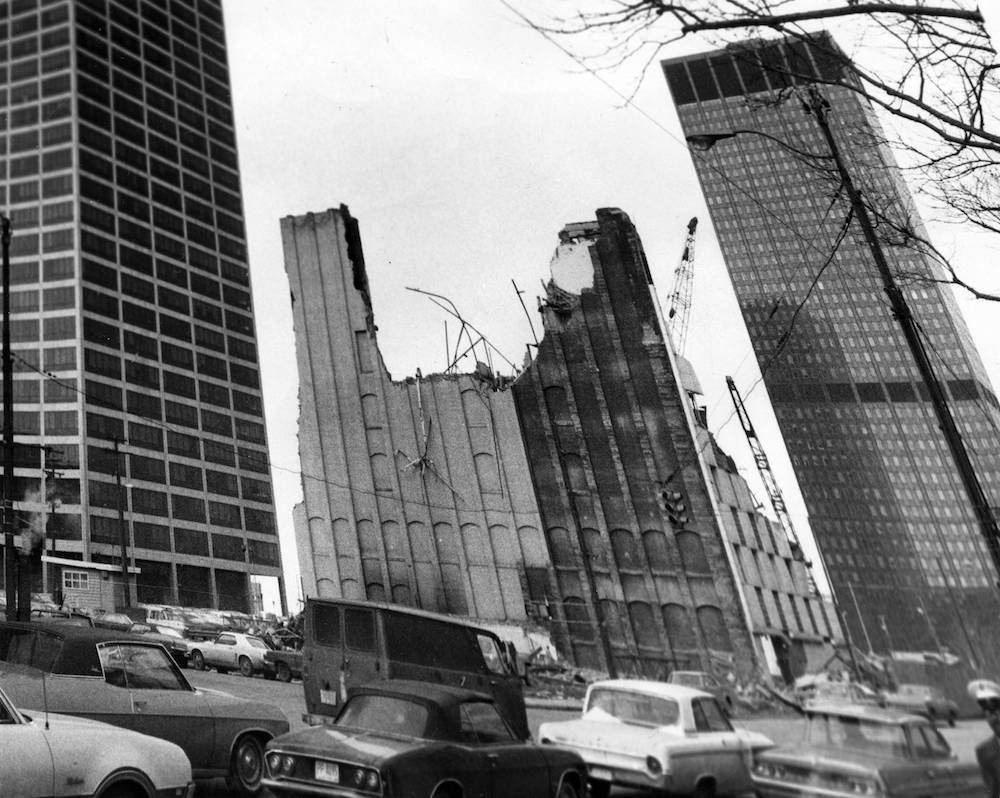
The Bond Court hotel and office complex project plans were first announced in 1966. The project site at East 6th Street and St. Clair Avenue was in the urban renewal area known as Erieview. The project’s name was inspired by the alley of the same name that ran directly behind the site. Downtown’s alleys use the name “Court,” and this one was so named because one of the streets it intersects—East 6th Street—was known as Bond Street before Cleveland adopted a street numbering system more than a century ago.
Bond Court was an answer to a long-developing problem: Cleveland’s convention trade had slipped alarmingly since its heyday in the 1920s. Although a 1963 expansion of the four-decade-old Public Auditorium helped, Cleveland had not built a new convention hotel since the onset of the Great Depression. In addition, what hotels it had were mostly outdated. A Hilton hotel on the Mall, proposed in 1958, was successfully defeated the following year by voters who did not like Hilton’s demand for a public subsidy and the forfeiture of public-owned land. Bond Court seemed to be what the city’s convention reputation needed for a revival.
Prior to 1966, the Bond Court site was home to the careworn Hotel Auditorium and Gilman Building, which were eventually razed to implement Bond Court. In May 1967, plans were officially approved by city officials to be undertaken as proposed. Irwin Management Co. of Columbus Industries and developer James M. Carney led the construction of the complex. Plans originally projected a $25-million complex with a 520-room hotel, 22-story office building, and five-story parking garage. However, these plans would have required federal aid, and on October 25, 1967, it was announced that the federal government refused to help. A casualty of federal dismay over Cleveland’s lackluster use of urban renewal funds, the Bond Court plans were left at a standstill for months.
In May 1969, almost five years after initial urban renewal-dependent plans were introduced for Bond Court, Mayor Carl Stokes announced a revised plan. The Hotel Auditorium and Gilman Building were now firmly slated for demolition. However, numerous roadblocks set back the Bond Court complex plans even further. In November 1973, Cleveland announced a scheduled completion date of early 1975, four years later than originally planned by developer James M. Carney. Amendments to the plans included an interior passageway leading to the office building, which had already been constructed.
By 1974, workers had completed eighteen floors of the Bond Court hotel. A fire in February of that year caused damage to the hotel and the adjacent parking garage. Construction resumed in April 1974, and in August 1975, the Bond Court Hotel finally made its debut. Its décor was reminiscent of modern European hotels. Elegant suites like the Copenhagen, Nairobi, Barcelona, and Kowloon were named after the areas they evoked. Most suites melded traditional and contemporary moods. Each included a color TV and radio, a continental table with two party chairs, and a desk with a chair. The hotel promised old-fashioned European hospitality and service, providing a rich experience for those who stayed there.
The Bond Court Hotel later became known as the Sheraton City Center. Thereafter, it became Crowne Plaza. More recently, the hotel closed for renovations and its 2014 reopening came with a new layout and a new name, the Westin Cleveland Downtown hotel.
Images





